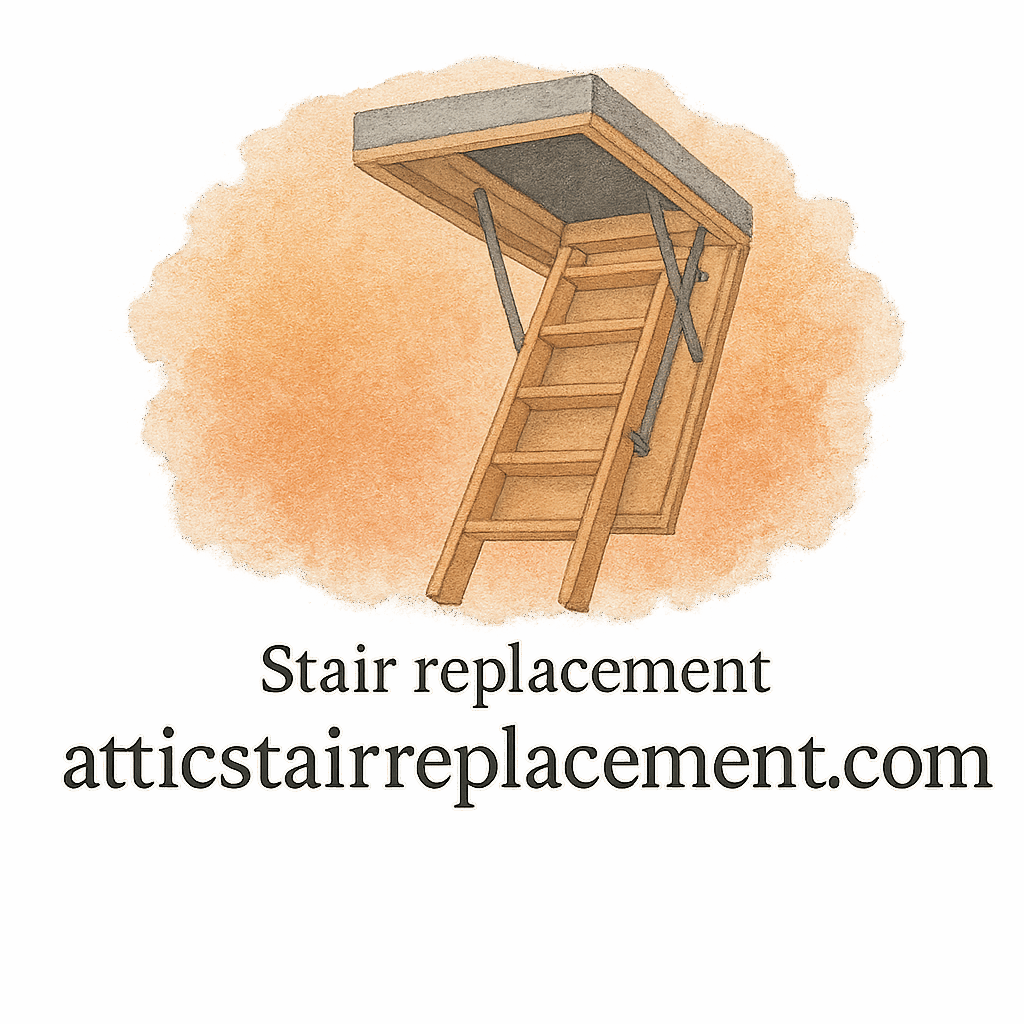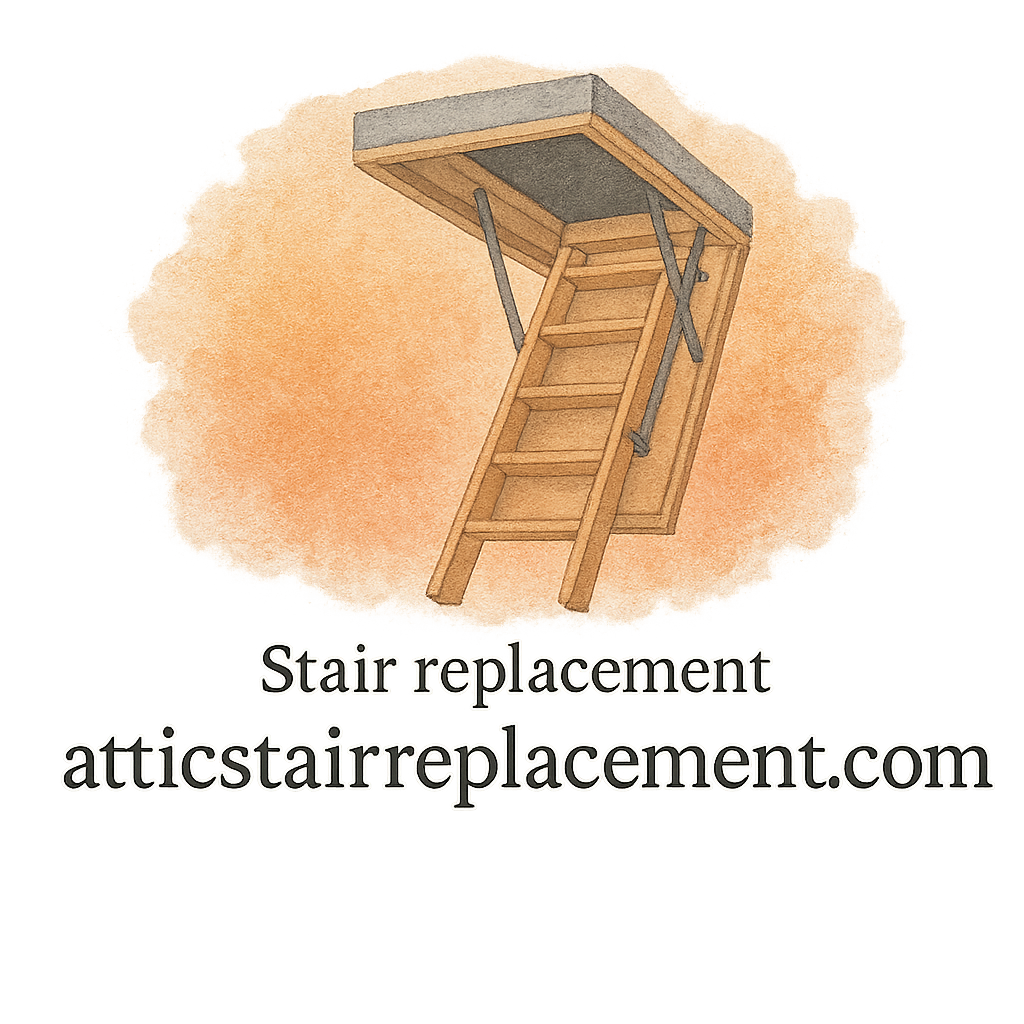Introduction
Thinking of upgrading your attic stairs? Choosing the right material isn’t just a design decision—it’s a long-term investment. Whether you’re remodeling or simply replacing a broken staircase, selecting the right stair material makes all the difference in terms of durability, safety, and budget.
This guide dives into the five best materials for long-lasting attic stair replacement, comparing their features and giving you real-world insights, so you don’t get stuck halfway up—or halfway through your renovation!
Why Material Matters in Attic Stair Replacement
Durability & Safety
A good attic stair should hold up to frequent use, heavy loads, and climate changes in your attic. The right material will ensure structural integrity, reduce maintenance, and increase your home’s overall safety.
Cost vs. Longevity
Some materials are cheap upfront but wear out fast. Others cost more but last decades with minimal maintenance. Striking a balance is key—especially if you’re juggling other home improvement projects.
1. Aluminum: Lightweight & Rust-Resistant
Key Benefits
Aluminum attic stairs are among the most popular choices for a reason. They’re lightweight, rust-proof, and super easy to install. They also don’t warp or expand with temperature changes, which is a major perk in hot or humid climates.
- Corrosion-resistant
- Easy to handle for DIYers
- Ideal for light to moderate foot traffic
Check out our DIY installation guide to see just how simple it is to fit aluminum stairs yourself!
Ideal Use Cases
If you’re replacing attic stairs in a garage, shed, or drywalled ceiling space, aluminum is a great pick. It suits light storage access perfectly.
Pros and Cons
Pros:
- Lightweight
- Rust-resistant
- Low maintenance
Cons:
- Can feel less sturdy than heavier options
- Not ideal for heavy-duty or frequent use
2. Steel: The Heavy-Duty Champion
Why Choose Steel?
Steel stairs are built to last. If you’re hauling up boxes of decorations, bins of tools, or other heavy items, steel’s strength is unmatched. They’re also fire-resistant, making them a solid choice for safety-conscious homeowners.
Visit our expert advice section for tips on using steel in multi-use attics.
Is It Right for You?
Choose steel if your attic is part of a frequently accessed space—like a loft conversion or utility room. It’s especially great in homes where heavy-duty durability is essential.
Strengths and Weaknesses
Pros:
- Super strong and secure
- Fire-resistant
- Great for frequent use
Cons:
- Heavy (requires pro installation or multiple people)
- Prone to rust if not coated properly
3. Wood: The Classic Contender
Best Types of Wood for Attic Stairs
Wood stairs offer a timeless appeal and a solid feel underfoot. The most commonly used woods include:
- Pine: Affordable and widely available
- Oak: Strong and stylish
- Maple: Dense and durable
Visit our product reviews page for comparisons of top-rated wooden attic stairs.
When Wood Makes Sense
If you’re going for a classic look, or want something that matches the rest of your home’s woodwork, this material hits the mark. Ideal for low- to medium-traffic attics, especially in dry climates.
Maintenance Tips
- Regularly inspect for cracks or warping
- Apply sealant annually
- Avoid exposure to moisture
Explore our maintenance tips to extend your wood stair’s lifespan.

4. Fiberglass: The Modern Alternative
What Makes It Unique?
Fiberglass stairs are a newer entrant into the attic stair market. They’re incredibly resistant to moisture, mold, and temperature changes. Plus, they’re non-conductive, which is great if you’re accessing an attic filled with wiring.
Performance Over Time
Fiberglass is low-maintenance and designed to outlast traditional materials, though it’s often more expensive upfront. Still, if longevity is your priority, it’s well worth considering.
Need help deciding? Read through our expert guides for advice.
5. Composite Materials: Built for the Future
What’s in a Composite?
Composites mix plastic resins with fiberglass, wood particles, or other reinforcements to create a super-strong, weatherproof stair. They’re engineered for maximum strength and minimum maintenance.
Is It Worth the Investment?
If you’re planning a long-term home renovation or remodel, investing in composite stairs might be the smartest move you make this year. They combine the best traits of aluminum, steel, and fiberglass—making them incredibly versatile.
How to Choose the Best Material for Your Attic
Matching Material to Your Home’s Needs
Consider your attic’s usage: Is it just for storage, or are you converting it into an extra bedroom or office? That will dictate the strength, style, and cost of your replacement stairs.
Longevity & Load Capacity
Think beyond now. The best stair materials will support your future needs—not just the current moment. Use our budget tips to find a balance between price and quality.
Pro Installation vs. DIY: What’s Better for You?
When to Hire a Contractor
For heavy materials like steel, or if your ceiling structure needs reinforcing, it’s best to bring in a professional contractor. You’ll save time, avoid installation mistakes, and ensure the job is done right.
Going the DIY Route
Aluminum and some wooden models are ideal for handy homeowners. Just follow step-by-step guides like this DIY attic stair installation.
Final Thoughts: Picking the Right Attic Stair Material
There’s no “one-size-fits-all” when it comes to attic stair replacement. It all depends on your budget, space, and usage. Aluminum works great for quick access, steel delivers strength, and fiberglass or composites offer futuristic solutions.
Need more help? Explore the latest in attic care, read product reviews, and browse through tips from experts before making your move.
Conclusion
Your attic deserves more than a rickety old ladder. Replacing your stairs with the right material can transform your attic from a forgotten space to a functional part of your home. Whether you go with aluminum for ease, steel for strength, wood for warmth, fiberglass for resistance, or composites for all-around performance—choose wisely.
And remember, the best stair is the one that fits your home, your lifestyle, and your goals.
FAQs
1. What’s the most durable material for attic stairs?
Steel and composite materials top the list in terms of long-term durability and load capacity.
2. Are aluminum attic stairs safe?
Yes, when installed properly, aluminum stairs are very safe for light to moderate use. They’re also rust-resistant.
3. Can I install attic stairs myself?
Absolutely—especially if you choose lightweight materials like aluminum. Check out our DIY installation guide for help.
4. What type of wood is best for attic staircases?
Oak and maple are strong, durable choices, while pine is more budget-friendly.
5. Do fiberglass attic stairs need maintenance?
Minimal maintenance is needed. They resist moisture and mold, making them ideal for long-term use.
6. Are composite attic stairs worth the price?
Yes, if you want a material that blends strength, weather resistance, and low maintenance, composites are a great investment.
7. What mistakes should I avoid during attic stair replacement?
Avoid using the wrong materials for your attic conditions, skipping structural inspections, or ignoring job-quality standards. Browse our expert tips to learn more.


